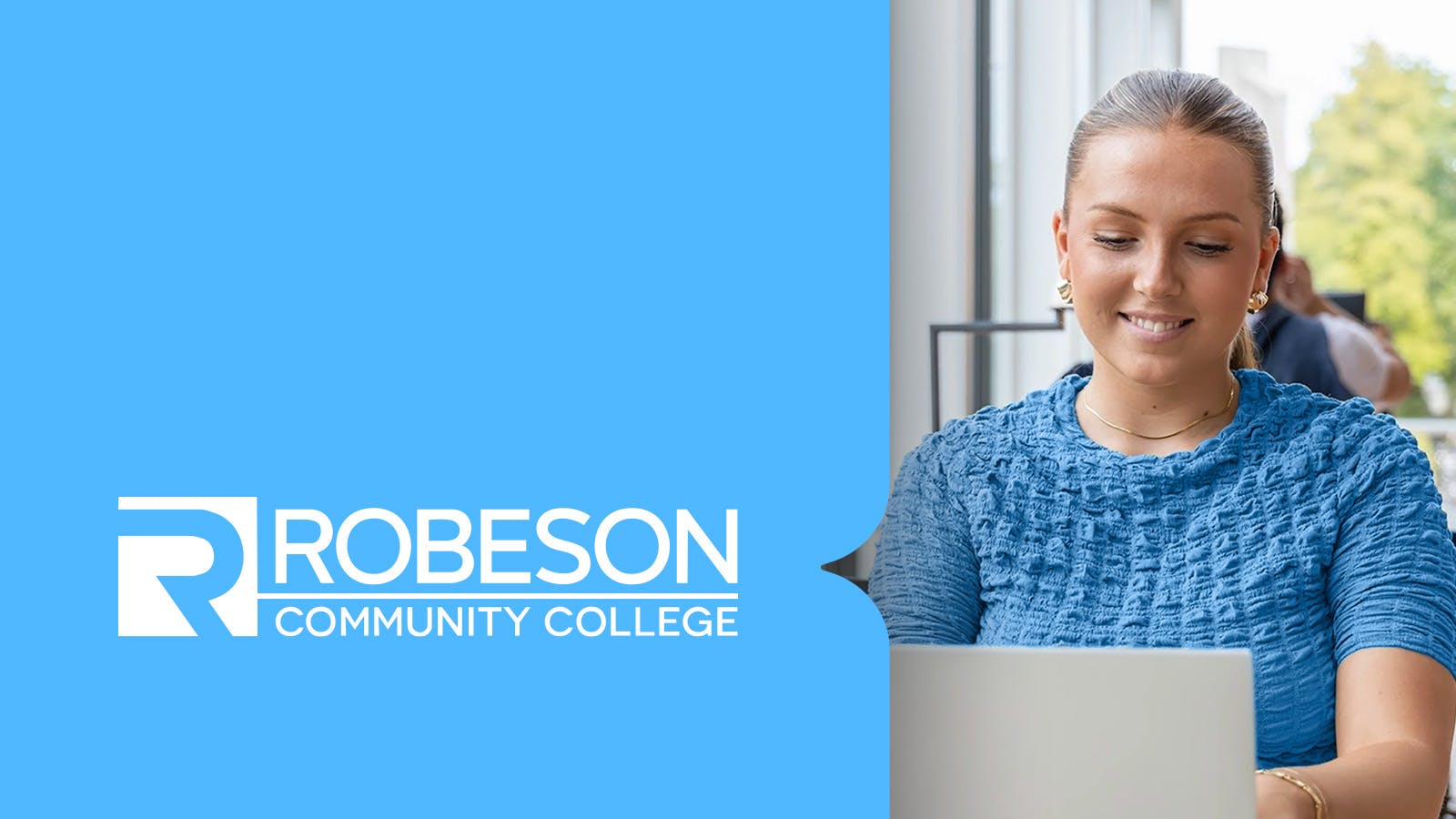Results at a glance
After introducing Read&Write, Robeson Community College saw immediate impact:
- Scaled support without added staff: Faculty met growing student needs using existing resources and no extra systems.
- Confidence on the rise: Students reported feeling like they could “finally keep up” and stay on track.
- Success stories multiplying: From passing licensing exams to re-engaging with career goals, students are seeing real wins.
Robeson Community College (RCC) serves roughly 2,000 students. The university's minority enrollment is 80%.
“It’s scalable. We didn’t need more people to support more students.”
Reimagining student support
What if the key to academic success isn’t more remediation, but smarter, more accessible support from day one? At Robeson Community College (RCC), that question is shaping a powerful shift. One that begins with meeting students where they are and showing them what’s possible.
Located in Lumberton, North Carolina, RCC serves nearly 2,000 students. Many come in ready to work hard but haven’t had access to the kinds of tools or strategies that make college feel manageable. These gaps aren’t always diagnosed or even recognized, but they are real. They show up in the form of missed assignments, and fading confidence.
“Many students think they’re just bad at school. No one’s ever shown them a different way,” said William Nastasi, Director of RCC’s work in the state-led Access to Achievement initiative.
By making academic support available from the start and giving students the tools to use it independently, RCC is showing how colleges can improve outcomes without expanding their staffing footprint.
Breaking down barriers to access
RCC’s student body reflects a trend seen across higher education: many learners are arriving with drive and potential, but fewer come with formal diagnoses or documented support needs. As a result, many students who could benefit from extra help never receive it. Traditional systems depend on paperwork, referrals, and self-advocacy — steps that can create barriers rather than remove them.
“We have students who come in reading at a third-grade level,” William shared. “These are smart students. They just haven’t had the support.”
Rather than waiting for students to seek help, the college introduced Read&Write from day one. The tool, which includes features like text-to-speech, screen masking, and vocabulary scaffolding, was made available to all students. There was no paperwork needed, no special permissions, and no stigma. Just practical, accessible support that students could start using immediately.
“A lot of students just need to hear the words instead of reading them. Read&Write does that,” William said. One student told him, “I don’t need a tutor if I have this.”
The faculty’s response was immediate. A campus-wide lunch and learn drew 41 faculty and staff, representing more than half of RCC’s full-time instructors. From there, momentum spread quickly. Instructors began embedding Read&Write into syllabi, modeling it in class, and encouraging students to use it as part of their regular routine.
“We didn’t have to sell it. We just showed it,” William said.
Faculty-led momentum
Faculty began to see changes play out in real time as students started approaching their work differently, showing up more consistently, and responding with greater confidence. Students who once avoided assignments started finishing them. Some, for the first time, said they felt like they were finally making progress.
“They feel like they can keep up,” William said. “They’re not behind anymore.”
With Read&Write, instructors no longer needed to stretch limited support services. Students were getting what they needed, when they needed it, without extra staffing or additional systems.
“It’s scalable,” William said. “We didn’t need more people to support more students.”
Stories of student growth continue to surface. One learner, who had previously failed the realtor licensing exam twice, used Read&Write to prepare and finally passed. Another, who had disengaged from class, met with William and talked about becoming an EMT. He began showing up again, consistently using the tool to stay on track.
“Everything changed after that,” William said.
While the college is still in its beginning stages of implementation, the early signs are clear. Confidence is growing. Students are sticking with their work. And faculty feel more equipped to support all kinds of learners, not just the ones who already know how to ask for help.
What other universities can learn
RCC isn’t treating Read&Write as a one-off initiative. It is becoming part of how the college teaches, supports, and reaches students, starting from the very first interaction.
This fall, RCC will support the first training for Access to Achievement’s other institutions. They will share lessons learned, help shape a peer-driven network, and continue to lead by example.
“We see Read&Write becoming part of how we teach and support all students. But we’re not there yet. That’s what this next phase is about,” William said.
Supported by strong faculty engagement and visible momentum, RCC is modeling what it means to build infrastructure that serves every learner, not just those who know how to ask. That work is ongoing and evolving, but it’s already creating real, visible change across campus.
“The moment they realize they’re capable, it changes everything.” – William Nastasi
